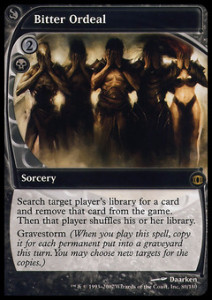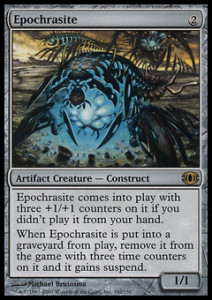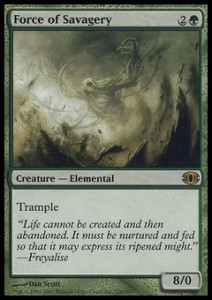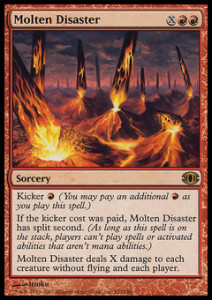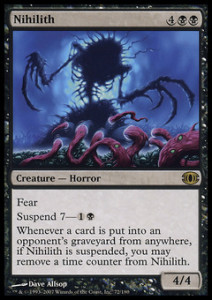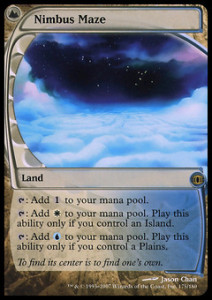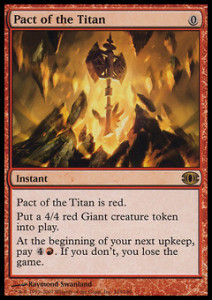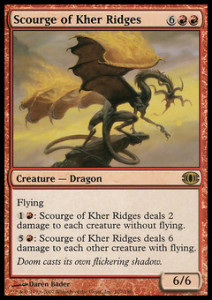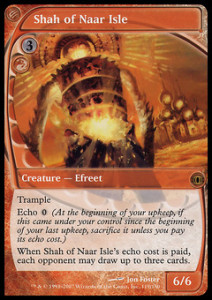[O_U user_role=”protrader” blocked_meassage=”
ProTraders only!
“]
Content goes here
[/O_U]
Since I am not writing Finance articles for MTG Price exclusively now, it felt appropriate to do an introductory “first” article to introduce myself and my goals for the series I’ll be writing. Why the ironic quotes around “first”? Well, as much as this feels like a new beginning, I have contributed to MTG Price in the past. This is as much a homecoming as it is an introduction.
Still, a lot of you weren’t around last time I was here and it’s all new to you. Perfect. Even though I’m merely resuming writing, I am launching a new series and I am excited about it because it’s well within my wheelhouse. Corbin introduced himself and his goals very well and I think I would like to do the same.
I want to talk about EDH and its financial implications.
I will now take questions.
EDH Finance FAQ

Q: Why not continue your series from where it left off?
A: It was a little dry and technical. It was sort of a blueprint for how “not to” MTG Finance, which is useful, but I also said nearly everything I wanted to say in that series. I covered some more topics on Quiet Speculation and I think repeating what I already wrote is a lazy way to start a series. I am sure I will end up reiterating some things as they come up, however.
Q: What are your goals for the series?
A: I want to cover the nuances of EDH and how it uniquely pertains to finance in a way that formats like Standard do not. Some of our instincts as financiers are very good and some of them are very, very poor. Learning those nuances is very helpful in finance and since I’ve been deep in EDH for two years, I feel like I have learned a lot I can pass on. You learn by doing, or reading from people who have been doing. I am sure most of you would rather just read about my trial and error process. There has been quite a bit of error and it’s been enormously instructive. I’m looking forward to passing that knowledge along to people who have great finance instincts and are eager to learn about how EDH is unique.
Q: Will you cover Tiny Leaders?
A: I am sure I will. There are some corollaries with EDH and there are some wild divergences. I don’t understand Tiny Leaders as well as I would like to but I am investigating it on a weekly basis and learning more all the time. If I say anything about a format like Tiny Leaders that I don’t understand as well as I understand 100 card, it will be because I’m very confident in what I am saying. The last thing I want to do is lead people astray and have them end up holding the bag on bad specs that were hype-based rather than reality-based. If Tiny Leaders has staying power as a format, it’s worth taking some time to really understand it. That said, I have some impressions that I will share in the weeks to come.
Q: Is EDH Finance really all that different?
A: Yes and no. While good cards are going to be worth money and bad cards are going to be worth not money, just like in other formats, there are some nuances. I have learned a lot through trial and error and I want to impart some of that hard-earned experience. It’s easy to buy too early, sell too early, misread signals and buy the wrong things. Good cards end up worth nothing three years after they’re printed. Mediocre cards rocket up in price. Even people who understand EDH as a format very well struggle sometimes. How can someone who doesn’t pay attention to EDH at all be expected to make sense of it?
EDH Finance isn’t harder than any other facet of finance, but there are some rules that don’t apply to other types of finance. Once you learn those rules, it will all start to make sense. You could take the time to learn some of the nuances on your own, but you don’t have to. I’ve got you covered.
Q: I don’t care about EDH.
A: …that isn’t a question.
Q: I don’t care about EDH?
A: That’s not really… you know what, forget it. I’ll actually field this one.
I don’t care about Vintage, but if I find a foil Vandalblast in a bulk foil bin for $0.50, whether or not I care about its Vintage implications is irrelevant; I am either knowledgeable enough to stack that scrilla or I’m not. My personal feelings don’t enter into what is essentially a financial transaction, so don’t leave money on the table because you aren’t an EDH player. If you know the Blackhawks are going to win the Stanley Cup you bet on them regardless of whether or not you know how to skate.
Making smart moves in MTG Finance requires you to pay attention to as many facets of the game as you can manage, so at least knowing what’s going on in EDH when major events like a drastic rules change or the spoiling of new cards from a Commander sealed set happen. Knowing how to handle those situations means you buy ahead of hype and sell into it. That’s the play, after all.
I keep talking about how I plan to codify as much of what I’ve learned as I can, freeing you up to really focus on other aspects of finance, but I think now that I have outlined my goals for the series a bit and still have your attention, I want to make the case for caring about EDH yourself. I want to help you know what you’re talking about. I am even going to try and convince you to build a deck and play a few games. Do you have to? Nope! But I think you’ll be glad you did. You can take that to the bank.

In Defense of Durdling
I am a pretty late EDH convert. I wasn’t excited about the format initially and when I saw huge, durdly games with 5 players take up an entire card table with gigantic board states and no one able to really swing profitably, it turned me off the way it has a lot of people. I couldn’t see myself investing two or three hours into one game without starting to wonder which make and model of pistol had the tastiest barrel.
When Innistrad block came out, trading at large events was still a thing, but barely. I would spend hours before the event packing my binders with a mix of casual and competitive cards. I would make sure I had a long list of staples specific to the event I was going to. I made sure I knew the prices of every card in my binder so I could cut down on the time people spent looking cards up. I was ready.
I needn’t have bothered.
I got to the event site both days of an SCG Open with the cards people needed for either Standard or Legacy and got a few trades in from people frantically trying to get the cards they needed for their decks, but for the most part people just bought the cards they needed for decks. The trades I did get in took too long because my trade partners wanted to look up my cards and their cards to make sure that even though I was willing to trade them the card they couldn’t play the event without and take whatever they had in their binder so long as it was worth it for me financially that the trade wasn’t in my favor by as much as a quarter. After the event started, the only people trading were other sharks, and trading with them was only semi-productive. If you are forced to trade straight across with someone who knows prices as well as you do, all you can do is target cards you think will go up soon and try and maximize the number of cards you don’t think will go up that you get rid of. It’s worth doing, but only just barely.
The worst part was, I needn’t have bothered showing up with a fully stocked binder. If I’d bought 20 copies of Snapcaster Mage I could have had the only card anyone asked for and had a better time. People would look through 3 binders that had thousands of cards and say “no thanks; I didn’t see anything”. If this had been a GP, I could have sold cards to the dealers and made the trip worthwhile, but this was an SCG Open so even that wasn’t an option. Dejected, I slumped down on a table far from the trade tables and tables set up for the event. I dropped my binder on the table a little harder than I meant to and the gust of displaced air buffeted a pile of booster pack wrappers sitting between an older gentleman and his pre-teen son. sitting near me at the table. They looked over at me and both eyed my binder. The older man said to his son “Why not ask him?” and the kid asked me “Excuse me, do you have a” and I thought “Great, he gets to be person #400 to ask me for Snapcaster Mage. Best weekend ever” but he finished his sentence “Ludevic’s Test Subject?”
I snapped out of my funk. “Uhhh, yeah, absolutely.” I put my binder away and got out a different binder. Both of their eyes widened. I flipped the binder open “Do you want the set copy or the promo?” which was met with a “There’s a PROMO?!” from both of them. I slid a copy out and set it on his mat. The thought of looking through a binder didn’t appeal to me so I was prepared to give him the card, but he said “Will you take a Garruk for it?”
I think at the time, Garruk was worth $25 so that made the trade roughly… $25 in my favor. I tried to give him a playset, but he said “It’s for my blue monsters EDH deck. I only need one”. He handed me the Garruk and turned back to his father, elated, and they started picking up the pack wrappers and throwing them away. “We bought a box of Innistrad but didn’t get any Test Subjects” the dad explained. I was stunned. He was happier with his bulk rare Test Subject than I was with my Planeswalker. I had to know their secret. Over the next hour, we went through my binder page by page, pulling out cards for his blue monsters EDH deck and other cards he just liked. Every time I told him it was OK to pull more cards at me, he looked at me like I was either nuts or untrustworthy; like I was someone in a police procedural movie keeping the criminal on the phone long enough for the police to trace the call. He pulled out cards until he couldn’t find anything else he wanted and then I made some suggestions for cards he already owned that he could put in the deck.
All in all, he probably got $18 worth of cards and I made his whole weekend. I got a $25 card for $18 worth of bulk rares and garbage but that wasn’t what made my weekend. It was realizing that I had been trading with the wrong people.
I decided to try and build some EDH decks, and after going to a local shop on EDH night, I was able to trade a small number of expensive cards for two complete decks, decks I could work on improving. Not only that, I traded out a ton of the weird, foreign and foil cards I couldn’t sell on TCG Player and had been sitting on for months. They didn’t just want Snapcaster and the other 10 cards that were getting played in Standard. They wanted everything. My bulk rares were worth their weight in gold all of a sudden.
I stumbled into a community that still trades cards. A community that sees the value in cards like Boros Battleshaper and Progenitor Mimic. A community that isn’t looking to optimize their deck but rather optimize their experience. We should be thanking them, frankly, because if it weren’t for EDH and casual, only like 100 Magic cards would be worth money. Standard couldn’t make Chromatic Lantern worth $6 but EDH did. Modern couldn’t make Creakwood Liege worth $11, but EDH did. And Legacy couldn’t make Savor the Moment worth $5, only a speculative, targeted buyout predicated on the notion that the card is somehow good in Tiny Leaders could do that.
If you haven’t gone to the shop on EDH night, maybe try it one week. Take your trade binder with you, if you even still have a trade binder. You might be surprised with how much fun you have. You might see some cards in action that you weren’t aware of. You may do what I do all the time and see EDH cards in action and think to yourself “Why isn’t this card worth way more money?” That’s one of the burning questions I hope to answer with this series. Whether or not you take my advice and find an EDH group to trade with and learn a little bit from, we’re all going to benefit from discussing EDH with some scrutiny and an eye toward figuring out why certain cards aren’t worth more money.
Thanks for reading! I am glad to be back writing here at MTG Price and I am really glad to be writing about EDH and finance in the same column, finally! Check back next week and let’s start trying to figure out why certain cards aren’t worth more money.








